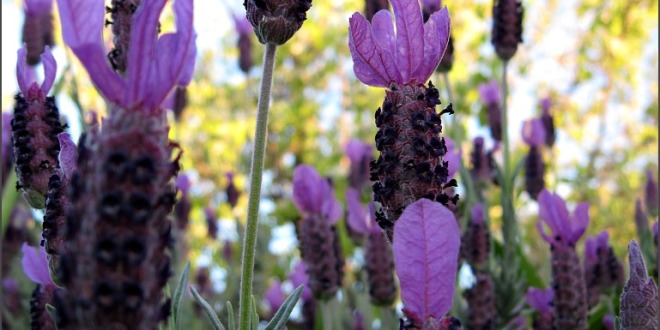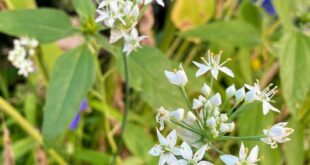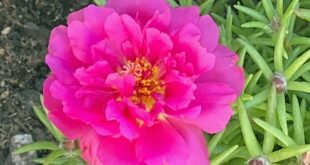Lavandula stoechas is also known as Spanish or French Lavender. It smells good and attracts bees, butterflies, and hummingbirds. Like other lavenders, it is associated with hot, dry, sunny conditions in alkaline soils. Spanish Lavender is more fragile than common lavender (Lavandula angustifolia), as it is less winter hardy; but harsher and more resinous in its oils.
Lavandula stoechas subsp. pedunculata
Family: Lamiaceae (lay-mee-AY-see-ee) (Info)
Genus: Lavandula (lav-AN-dew-lah) (Info)
Species: stoechas subsp. pedunculata
Category:
Herbs
Shrubs
Height:
24-36 in. (60-90 cm)
Spacing:
18-24 in. (45-60 cm)
24-36 in. (60-90 cm)
Hardiness:
USDA Zone 9a: to -6.6 °C (20 °F)
USDA Zone 9b: to -3.8 °C (25 °F)
USDA Zone 10a: to -1.1 °C (30 °F)
USDA Zone 10b: to 1.7 °C (35 °F)
USDA Zone 11: above 4.5 °C (40 °F)
Sun Exposure:
Full Sun
Sun to Partial Shade
Danger:
Unknown – Tell us
Bloom Color:
Violet/Lavender
Purple
Bloom Time:
Mid Spring
Late Spring/Early Summer
Mid Summer
Late Summer/Early Fall
Mid Fall
Foliage:
Grown for foliage
Evergreen
Silver/Gray
Blue-Green
Aromatic
Velvet/Fuzzy-Textured
Other details:
This plant is attractive to bees, butterflies and/or birds
Flowers are fragrant
Drought-tolerant; suitable for xeriscaping
Average Water Needs; Water regularly; do not overwater
Self-sows freely; deadhead if you do not want volunteer seedlings next season
This plant is resistant to deer
Flowers are good for cutting
Flowers are good for drying and preserving
Provides winter interest
Soil pH requirements:
6.1 to 6.5 (mildly acidic)
6.6 to 7.5 (neutral)
7.6 to 7.8 (mildly alkaline)
7.9 to 8.5 (alkaline)
Patent Information:
Unknown – Tell us
Propagation Methods:
From softwood cuttings
From semi-hardwood cuttings
From hardwood heel cuttings
From seed; direct sow outdoors in fall
From seed; winter sow in vented containers, coldframe or unheated greenhouse
From seed; sow indoors before last frost
From seed; direct sow after last frost
From seed; germinate in a damp paper towel
From seed; germinate in vitro in gelatin, agar or other medium
By simple layering
Seed Collecting:
Allow seedheads to dry on plants; remove and collect seeds
Properly cleaned, seed can be successfully stored
Read more: http://davesgarden.com/guides/pf/go/80589/#ixzz3K2gs5yKz








